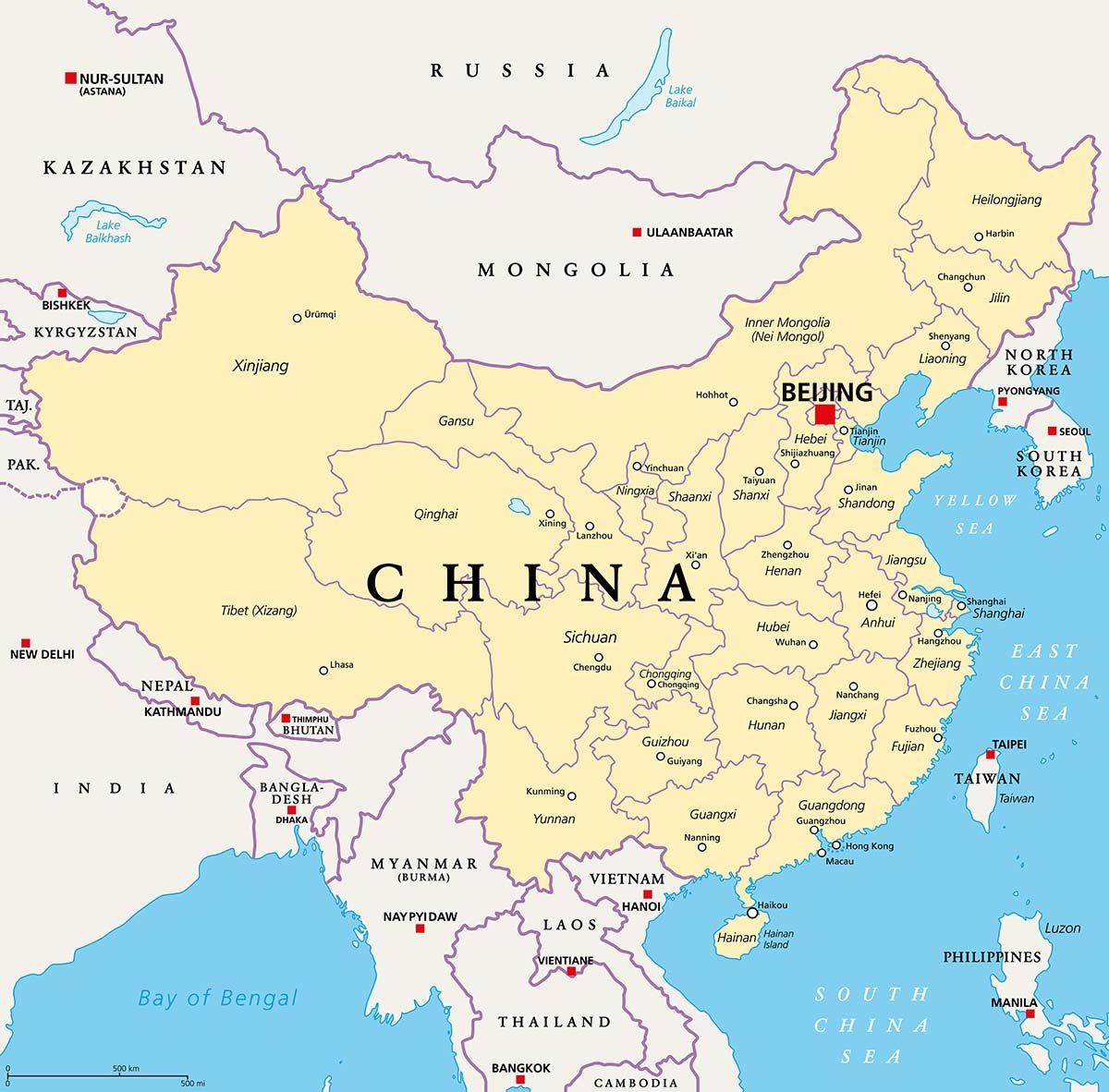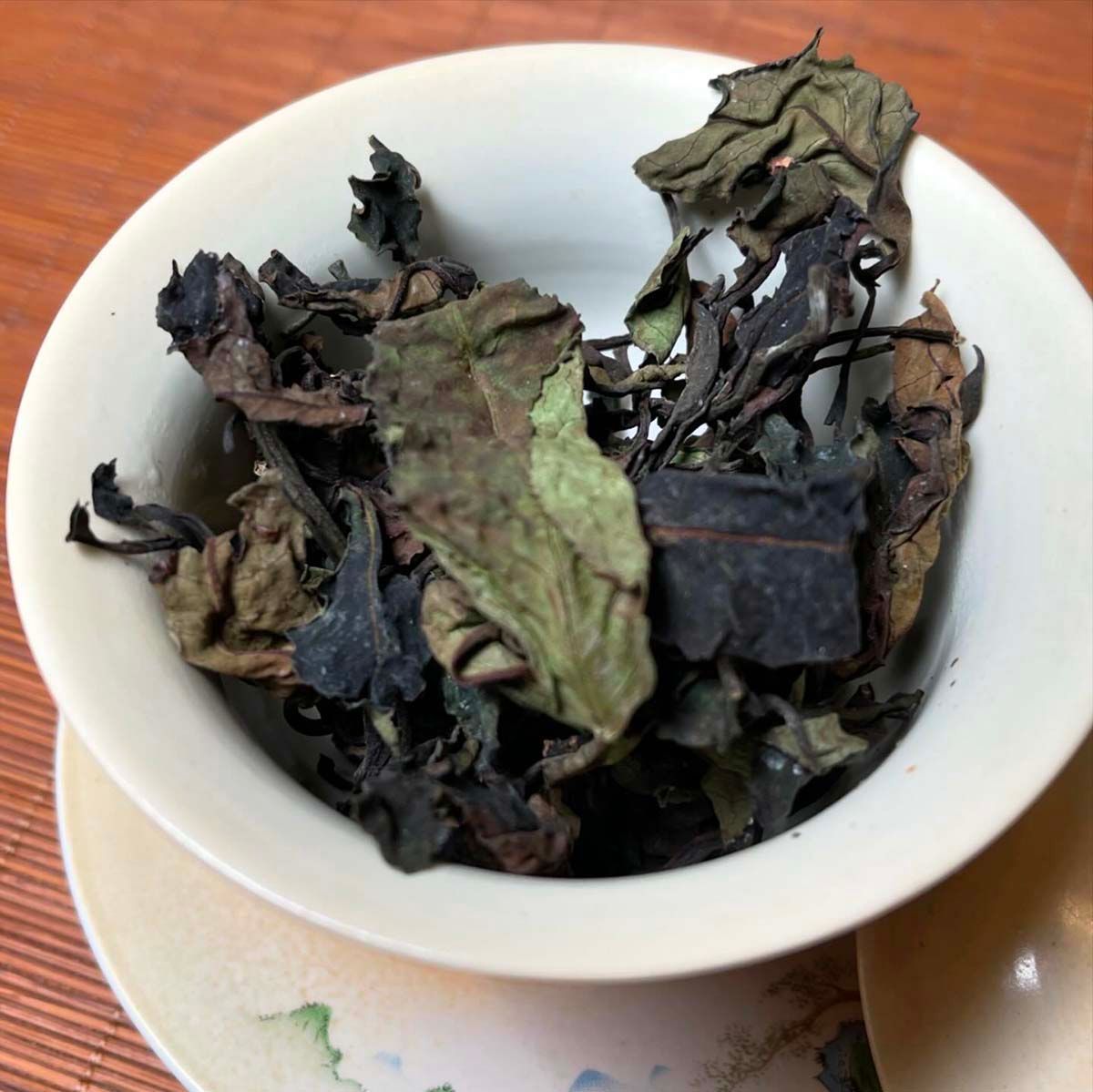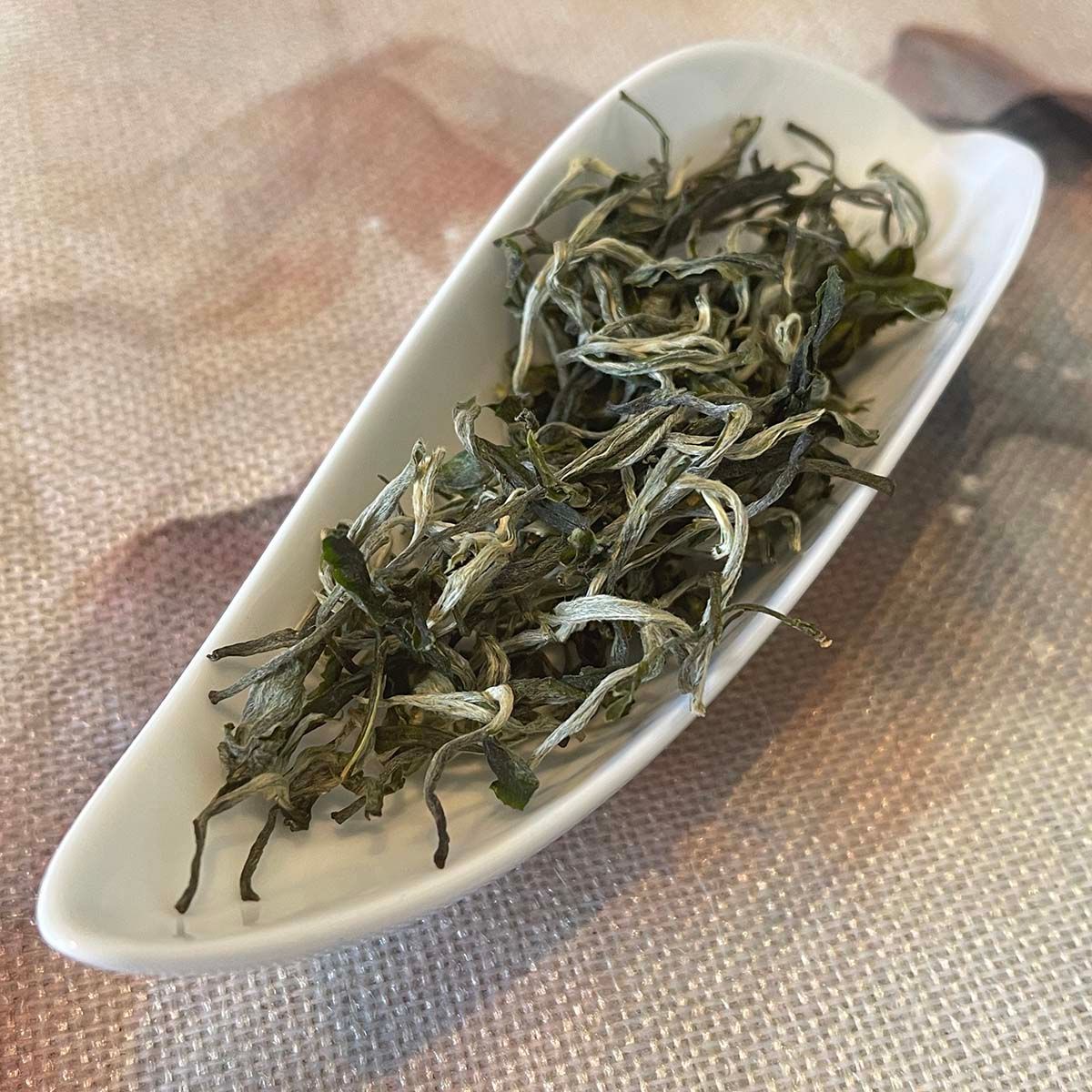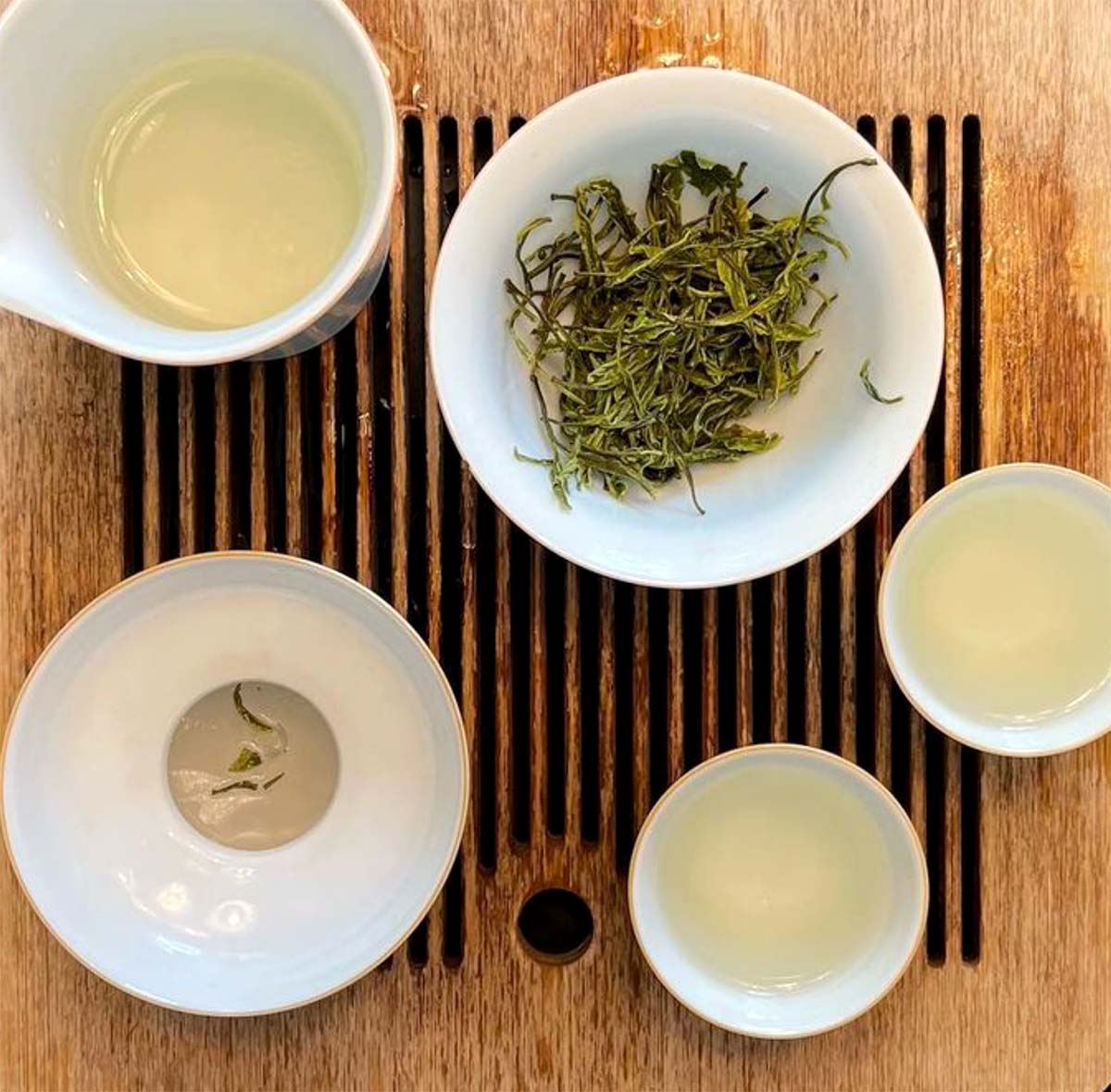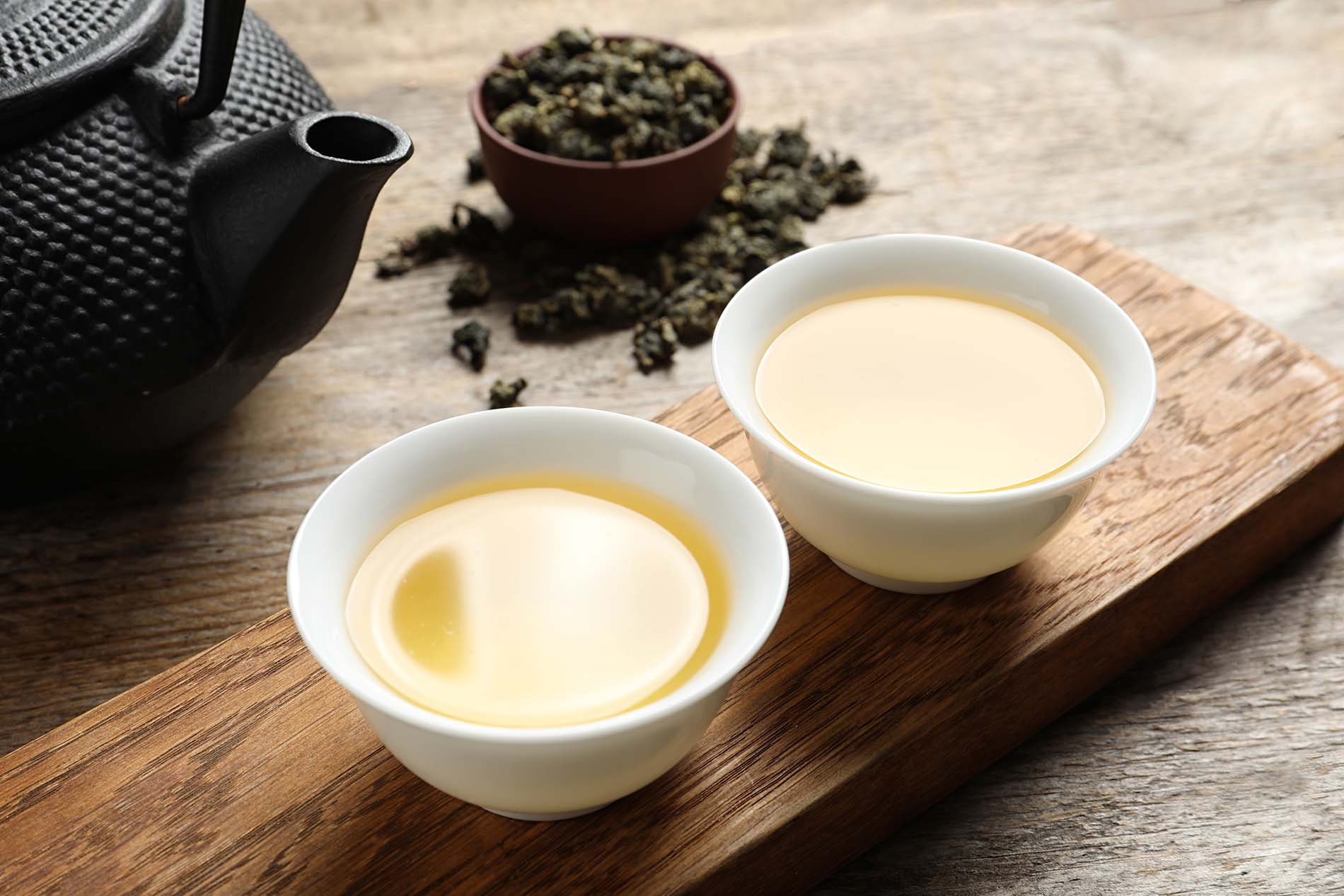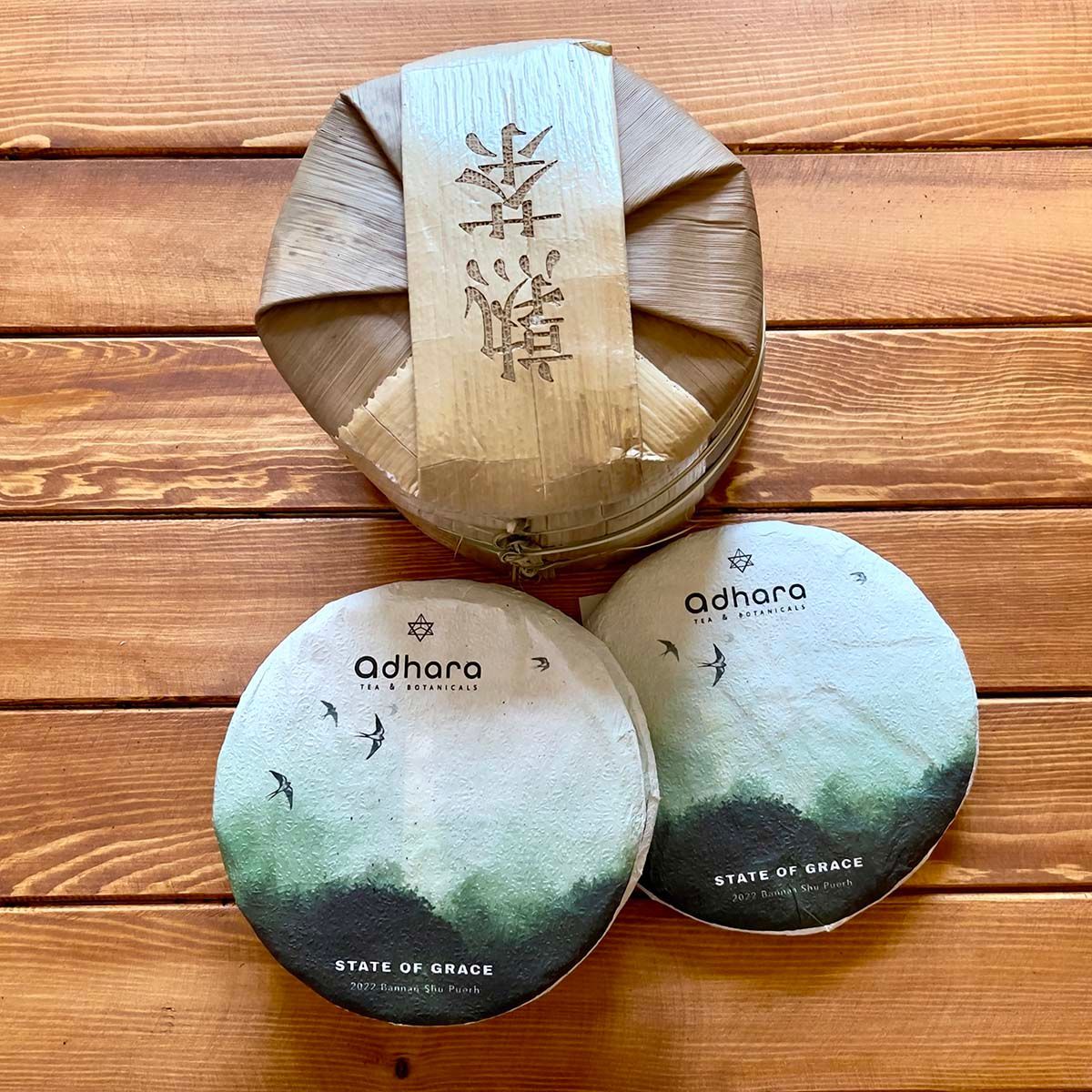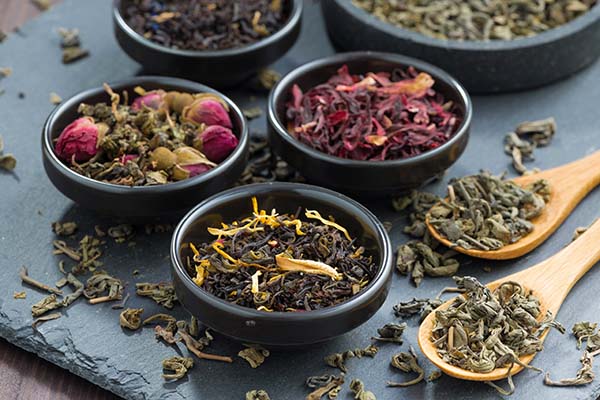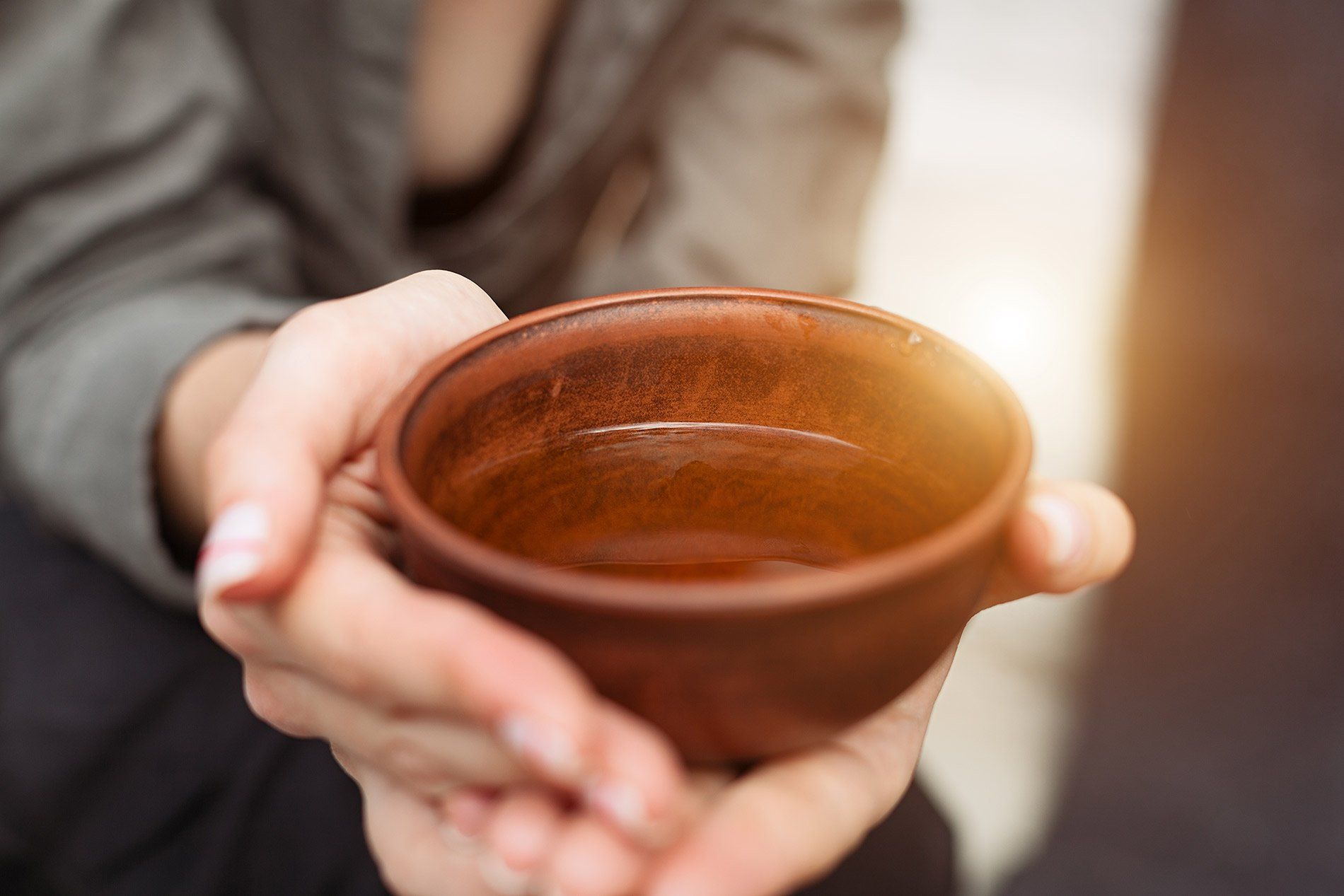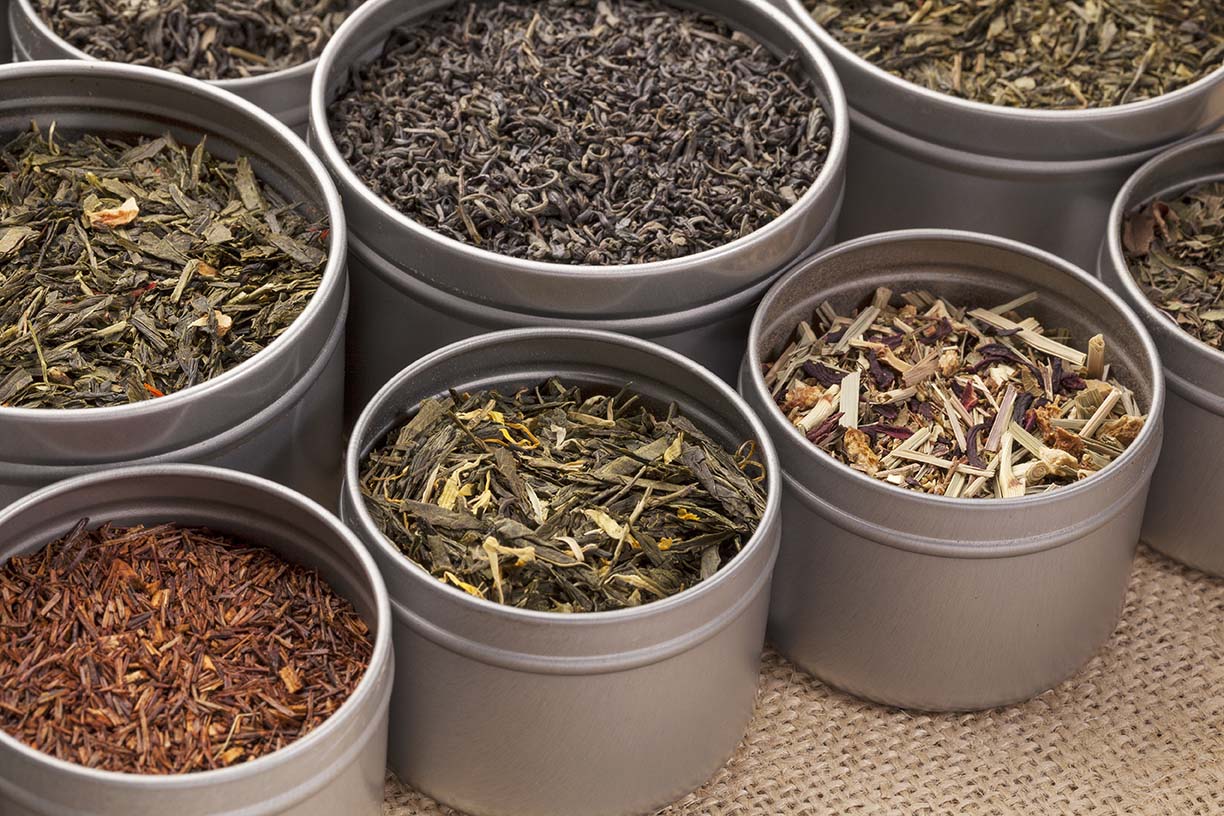Explore Chinese Green Tea
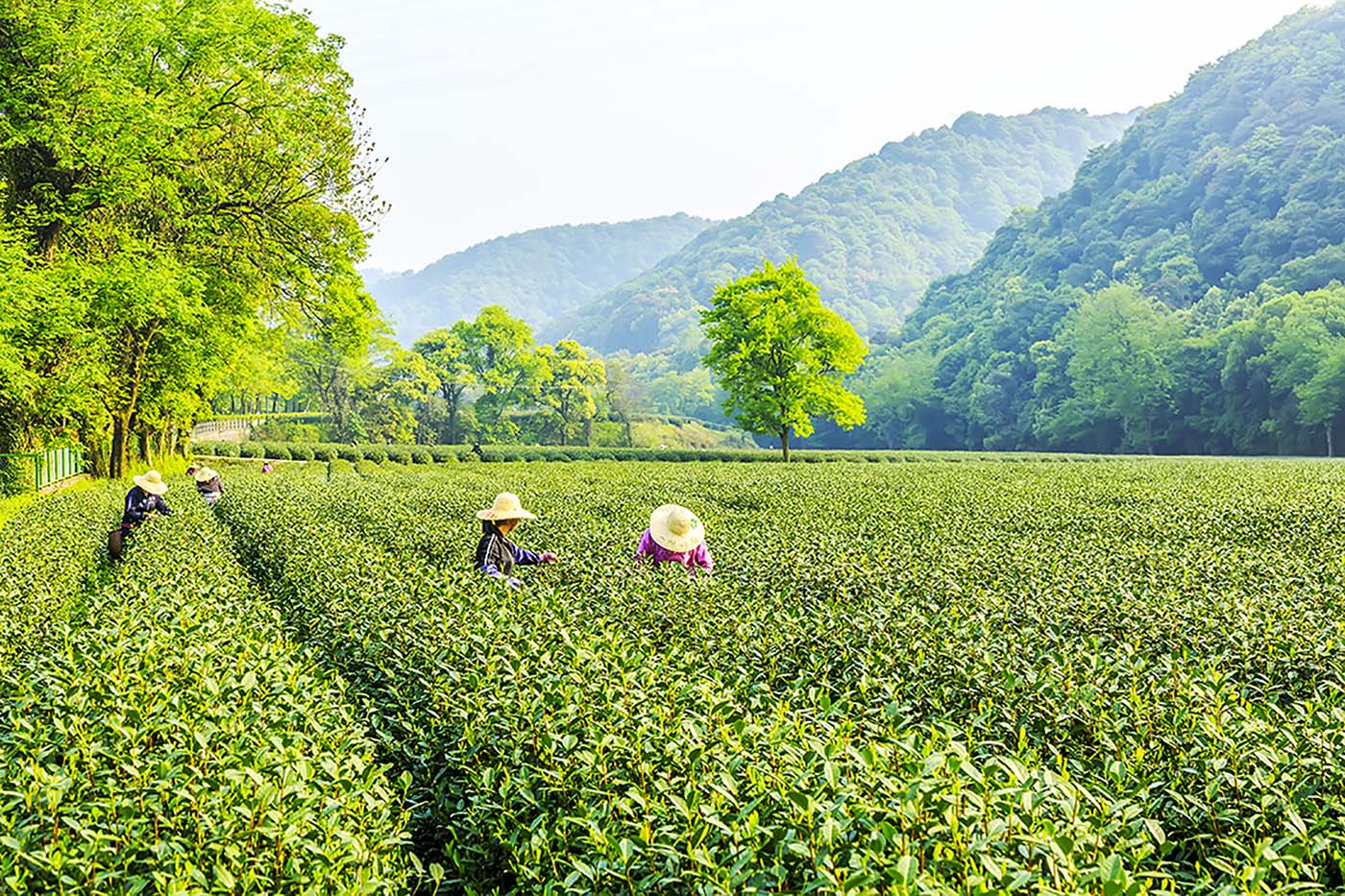
Green Tea Is Produced Throughout China In Many Varieties
Green tea is a globally well known beverage that belongs to the category of unfermented tea. Fermentation is stopped by exposing the freshly plucked tea leaves to heat after harvesting. This process called “fixing” and helps retain the teas natural color, aromatics, fresh taste, and beneficial antioxidants.
China is the world’s largest green tea exporter, and consumer. Over 80 percent of the green tea available in the global tea market comes from China.
Green tea has a long rich history which includes a book called Tea Classic written by Lu Yu in 600-900 AD during the Tang Dynasty. Tea Classic is an important part of green tea history and tea culture in China.
Many varieties of green tea are produced throughout China. Some of the famous varieties include Dragon Well (Long Jing) from Zhejiang Province, Bi Luo Chun from Jiangsu Province and Huang Shan Mao Feng from Anhui Province.
Zhejiang Province - produces many high-quality varieties including the following:
- Xi Hu Long Jing is one of the most famous of all Chinese green teas.
- Long Jing tea is the most well known green tea in China, and originates from Hangzhou the capital of Zhejiang Province. Long Jing literally means dragon well in Chinese. The tea is pan-fired and has a distinct flat appearance.
- Huiming tea is named after a temple in Zhejiang.
- Kaihua Longding tea is from Kaihua County known as Dragon Mountain.
- Hua Ding tea is from Tiantai County, named after a peak in the Tiantai mountain range.
- Qing Ding tea is from Tian Mu, also known as Green Top.
- Gunpowder is a popular tea also known as zhuchá, originates in Zhejiang but is now produced in other parts of China. This tea is also the quintessential ingredient in brewing Moroccan mint tea, which is brewed green tea with fresh mint.
- Jing Shan Mai Feng - is a famous green tea that can date back to the Tang Dynasty and Song Dynasty, and is known for its history and fresh, aromatic, sweet taste.
Jiangsu Province - is the origin of a famous green tea, and other styles of green tea including:
- Bi Luo Chun. A Chinese famous tea also known as Green Snail Spring, from Dong Ting. As with Longjing, inauthentic Bi Luo Chun is common and most of the tea marketed under this name may, in fact, be grown in Sichuan.
- Rain Flower is a tea from Nanjing.
- Que She (Tongue of golden altar sparrow) originates from Jin Tan city of Jiangsu Province.
- White Cloud is a green tea grown at high altitudes on the Yuntai mountain in Jiangsu Province. This handcrafted tea has a slight curl, with a deep jade to dark green color. The fragrance from the dry leaves is fresh and slightly grassy.
Fujian Province - is known for mountain-grown organic green tea, white tea and oolong tea. The coastal mountains provide a perfect growing environment for tea growing. Green tea is picked in spring and summer seasons.
- Jasmine tea (Mo Li Hua Cha). A tea that is scented or blended with jasmine flowers.
- Mao Feng tea. Meaning “furry peak” a green tea with young downy tea buds.
- Cui Jian Meaning “jade sword” an early spring green tea picked just after the buds have begun to sprout. Cui Jian green tea is very labor intensive and requires each bud to be carefully picked by hand.
Hubei Province -
- Yu Lu is a steamed green tea that is made in the Japanese style, and known as Gyokuro (Jade Dew) in Japanese.
Henan Province - An example of a Chinese green tea, called Mao Jian.
- Xin Yang Mao Jian, A Chinese famous tea also known as Green Tip, or Tippy Green. It is one of the top ten famous teas in China and one of the famous specialties in Henan Province.
Jiangxi Province -
- Chun Mee. “precious eyebrows” was created in Jiangxi, and is now also produced in other areas of China too.
- Gou Gu Nao. A famous rare and precious teas from Gou-gu-nao Mountain
- in Jiangxi, it has a cool, fragrant, and sweet long lasting flavor.
- Yun Wu. Is a tea also known as Cloud and Mist. The finished green tea leaves are tight, elegant strips with a smooth green appearance with a strong lasting aroma, and sweet flavor.
Anhui Province - is home to several varieties of tea, including three Chinese famous teas. These are:
- Da Fang is a green tea from Huangshan mountain is considered one of China's top ten teas, and has a flat appearance and similar production process to Long Jing tea. Huangshan Maofeng. A Chinese famous tea from Huangshan
- Liu An Gua Pian, A famous tea also known as Melon Seed and is known to be one of the oldest tea styles in China
- Hou Kui, A Chinese famous tea also known as Monkey King. It is made from large leaves that are formed long flat shape.
- Tun Lu is is a premium green tea from the south-eastern part of Anhui Province that is grown around Tunxi District of Huangshan City, the location borders the famous Huangshan mountain range. Tun Lu is also known as Tun Xi and is a highly regarded green tea in China.
- Huo Qing, A tea also known as Fire Green. Huo Qing green tea was first produced in Yong Xi Village so it was commonly called Yong Xi Huo Qing in China. It has a rich and smooth floral flavor with balanced astringency and sweetness that opens to a long and refreshing finish.
- Wu Li Qing, has been produced since the Song dynasty in China, and was in high demand among the Swedish nobility. It has a delicate and floral flavor profile with notes of magnolia flowers.
- Hyson, Is an early harvest medium-quality tea from many provinces in China. It is made from young harvested tea leaves that are thinly rolled to have a long twisted appearance.
- Jiu Hua Fo Cha - originated from the beautiful mount Jui Hua in Anhui Province. It has a wonderful grassy aroma and smooth refreshing sweet taste.
Sichuan Province -
- Zhu Ye Qing Also known as Meng Ding Cui Zhu or Green Bamboo is a special kind of green tea from Mount Emei. Mount Emei is designated as one of the Four Sacred Buddhist Mountains of China. The first Buddhist temple in China was built there.
- Meng Ding Gan Lu, is a pale green tea with sweet aftertaste from Meng Mountain, thus the name Mengding, which means “peak of Meng Mountain” in Chinese. Meng Ding Gan Lu is one of the oldest tea varieties in China, and dates back to the Han Dynasty around 2000 years ago.
Shanxi Province -
- Han Zhong Xian Hao. A green tea from the city of Han Zhong, which was created in the mid-eighties, and has a picking standard of a bud and a leaf or a bud and two leaves.
Hunan Province -
Hunan Province has been one of major tea producing regions in China since 230 BC. Centered around Dong Ting Lake and three rivers, its tea gardens produce many famous teas. However, fierce competition over many decades has made teas from Hunan hard to find on the market today.
- Gao Qiao Yin Feng (high bridge Silver Peak) is a curved shaped green tea from Gaoqiao Town, in Changsha County. The processing style was created in 1959 by Hunan Tea Institute. The tea is compact, curly and fully covered with silver fuzz. The flavor is fresh with a strong fragrance.
- Jiang Hua Mao Feng (Jiang Hua Hair Peak green tea)- is from Hua Jiang county
- Gu Zhang Mao Jiang (Gu Zhang Hair Bud ) is from Gu Zhang county and has a long tightly twisted leaf style made from the Bi Xiang Zao cultivar.
- Guan Zhuang Mao Jiang (Guan Zhuang Hair Bud green tea)- from Guan Zhuang areas of YuanLing county.
Shangdong Province -
- Xue Qing green tea has well-shaped, neat, compact, tightly-curled leaves that are deep green in color. The flavor is buttery and sweet with a full body and fresh fragrance.
- Lao Shan green tea (Lao Mountain green tea) - Tea from Laoshan offer unique characteristics from the region and mountain where the tea is grown. Lao Shan green tea has the complex flavor found in most high elevation teas from China.
Guizhou Province -
- Gui Ding Yun Wu (Gui Ding Cloud & Fog green tea) - Gui ding Yun Wu Tea was a tribute tea during the Tang, Song, Yuan, Ming and Qing dynasties. Guiding Yunwu Tea is produced on the mountainside of Yunwu Mountain
- Du Yun Mao Jian (Du Yun Hair Tip green tea) - Du Yun Mao Jian is one of Guizhou's most famous teas and is renowned among tea connoisseurs in China for its sweet taste and silky texture.
Production of Green Tea
Each successive century has provided some refinement in the processing of Green Tea but the process has 3 basic steps:
- Kill-Green” (also known as Fixing”): Stops the natural fermentation and growing processes within the leaves without damaging them. Steaming the leaves, hand pressing in a hot pan and baking techniques are used. This also sets up the next step for Rolling/Forming the leaves.
- Rolling & Forming: Leaves are passed through hot and/or cold rollers to slightly break down the leaves, which establishes the shape of the leaves and intensifies the tea flavour.
- Drying: Stabilizes the final moisture content of the leaves, stops fermentation, prevents mould growth, removes any grassy leaf taste and develops the tea’s aroma. Sun drying, pan heating and hot air methods are used.
Because Green Tea is exposed to the least amount of processing, this tea retains more of the naturalness of the tea plant than any other tea. More than 85% of the caffeine, 50% of the chlorophyll and most vitamins are retained.
Storing Green Tea
Since loose leaf Green Tea is exposed to the least amount of processing during production, the leaves are subject to natural enzymatic breakdown by oxidation just like any other organic material. Green Tea is best stored in a dark, cool, dry place, in a container that is airtight, or even in a refrigerator. We recommend refrigerating green tea, which actually may improve the taste, and keep it fresher longer. However, if the tea is refrigerated, it should remain refrigerated at all times because constant changes in tempeture will degrade the tea over time.
Ancient green tea production across China paved the way for it to become the renowned global beverage consumed all over the globe today. Discover the many varieties that are available for China, and other tea growing regions around the globe.
